Table 3.
Phenotypical CJD characteristics
| Molecular subtype | Clinical features | Neuropathology | PrP immunohistochemistry | |
|---|---|---|---|---|
| Frequent | MM1/MV1 |
dementia, cortical anopsy, myoclonia, short duration of disease (approximately 4 months) |
pronounced damage of the occipital cortex, PrP accumulations of the synaptic type |
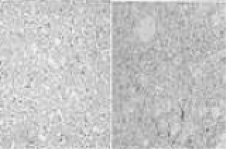 |
| MV2 |
ataxia, dementia, extrapyramidal motion disorder, long duration of disease (approximately 18 months) |
focal damage of the cortex, amyloid (kuru) plaques, focal plaque-like PrP accumulations |
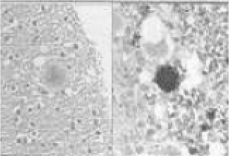 |
|
| VV2 | ataxia at onset, dementia at a late stage, average duration of disease (approximately 7 months) | pronounced damage of the subcortical structures as well as the brainstem, often spongiosis only located in the deeper cortical layers, plaque-like as well as perineuronal PrP accumulations | 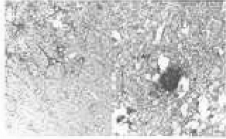 |
|
| Rare | MM2 thalamic (sFI) |
insomnia, dysautonomia, at a late stage ataxia and cognitive disturbance |
atrophy of the thalamus and the nucleus olivaris, lack of spongiosis possible |
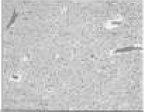 |
| MM2 cortical |
dementia for several months |
large confluent vacuoles with perivacuolar PrP accumulations |
 |
|
| VV1 | dementia at onset, later ataxia and extrapyramidal disorders | spongiosis, gliosis and loss of innervation of the cortical structures while omitting the brainstem and the cerebellum |  |
|
| vCJD | MM2b | psychiatric, dysaesthesia, ataxia, later dementia | spongiosis, gliosis and loss of innervation as well as 'florid' plaques | 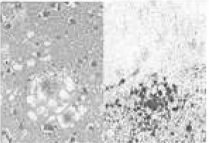 |
